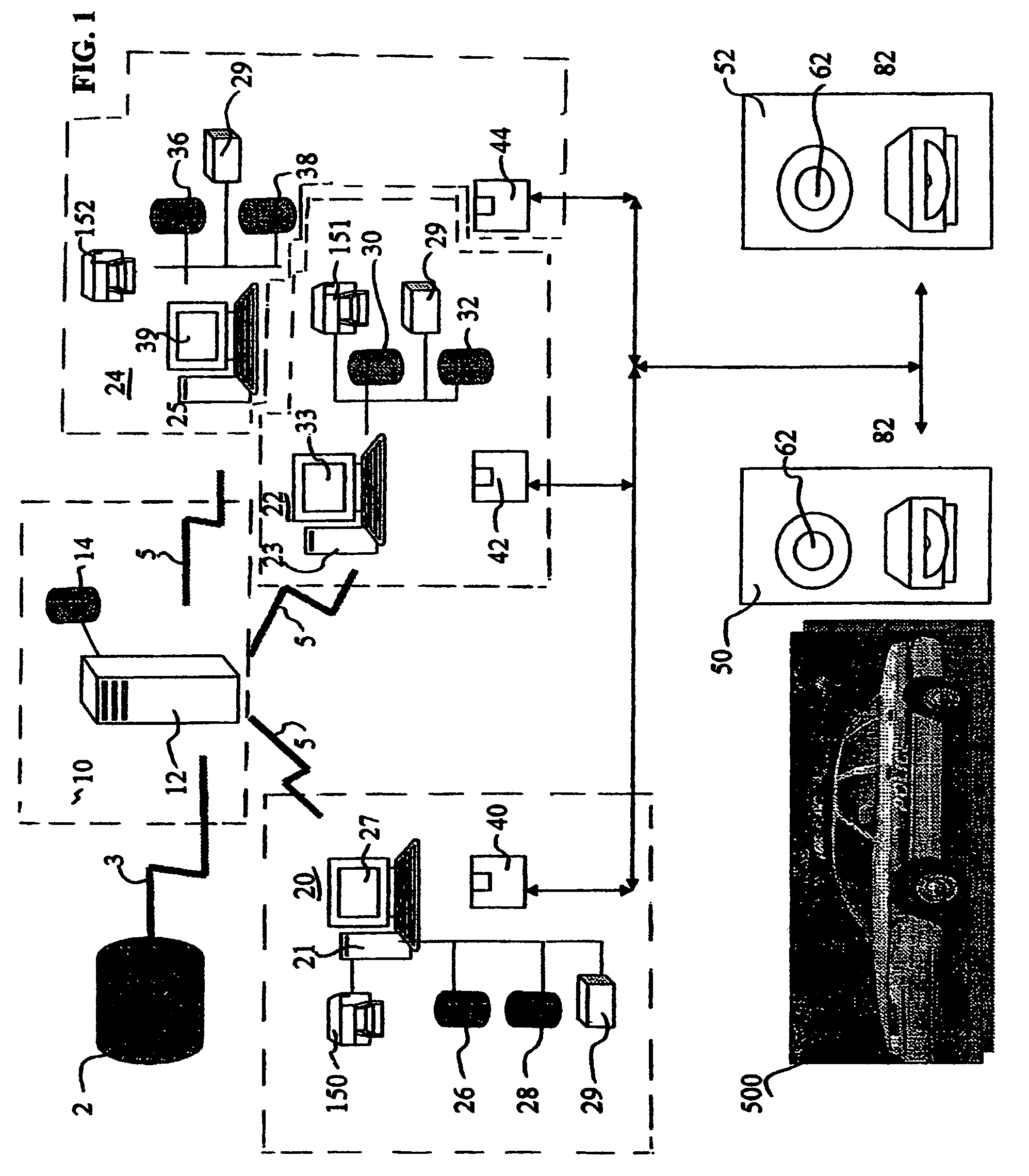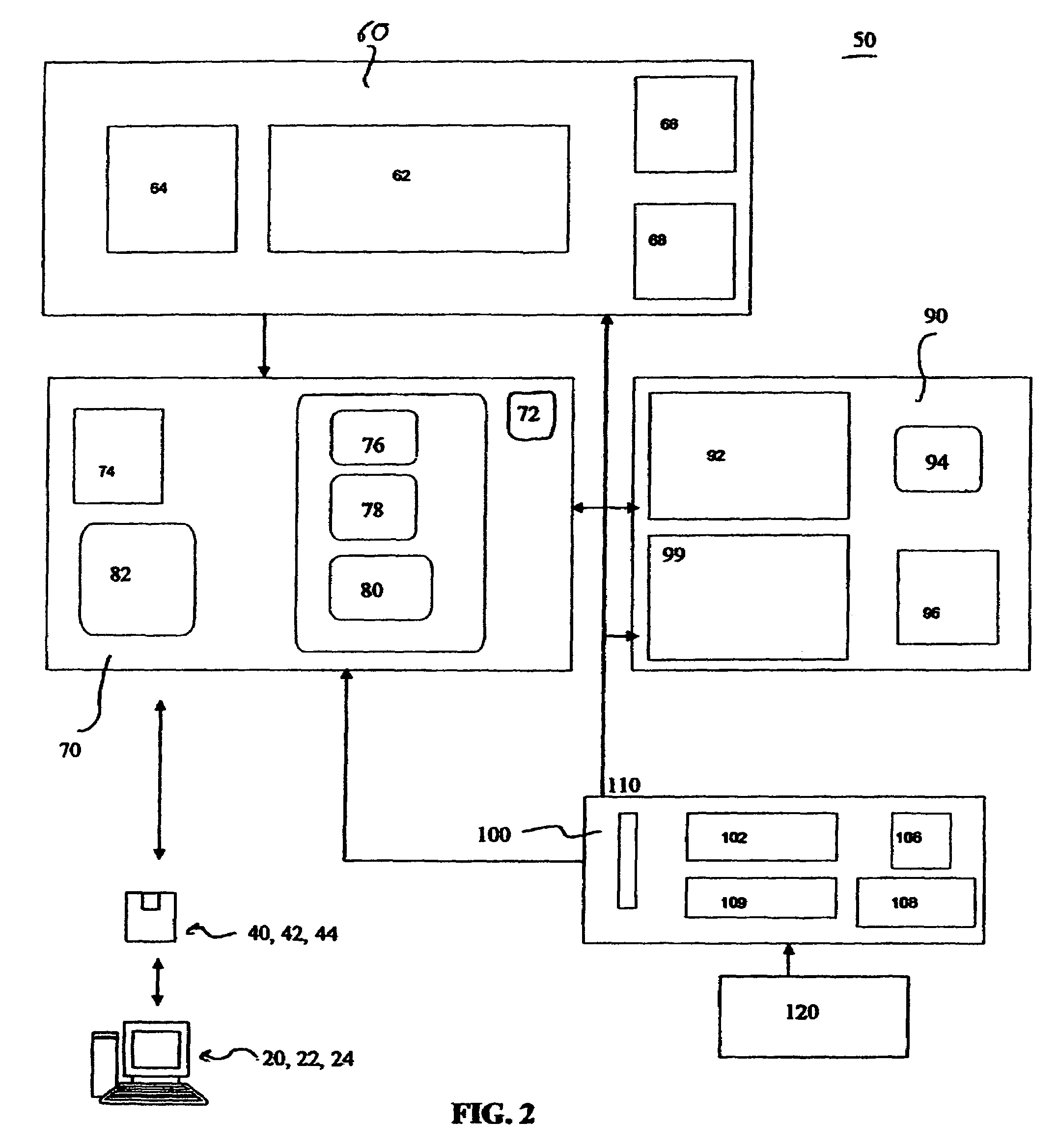System and method of vehicle surveillance
a vehicle and surveillance technology, applied in the field of vehicle surveillance, can solve the problems of draining our law enforcement system, insurance companies, and other economic resources, professional and non-professional thieves commit vehicle theft, and motor vehicle theft is the most expensive property crim
- Summary
- Abstract
- Description
- Claims
- Application Information
AI Technical Summary
Benefits of technology
Problems solved by technology
Method used
Image
Examples
Embodiment Construction
[0023]A preferred embodiment of the present invention is shown in FIGS. 1–3. FIG. 1 illustrates the system architecture of the present invention. FIGS. 1 and 2 illustrate the system and method used for both professional and non-professional thieves. FIGS. 1 and 3 illustrate the system and method used for locating professional thieves.
[0024]One aspect of the present invention is a system and method of conducting surveillance to detect stolen vehicles. The system is run and maintained at a service center 10. System subscribers, such as police departments and other law enforcement agencies, register with the service center 10. Subscribers register with the service center 10 via e-mail, phone, fax, or web site, or any such other method. Subscribers provide information about their jurisdiction, such as geographic location, known criminal activity, when shift changes occur.
[0025]The service center 10 has a central server 12. Storage, memory, and processing capabilities needed to operate t...
PUM
 Login to View More
Login to View More Abstract
Description
Claims
Application Information
 Login to View More
Login to View More - R&D
- Intellectual Property
- Life Sciences
- Materials
- Tech Scout
- Unparalleled Data Quality
- Higher Quality Content
- 60% Fewer Hallucinations
Browse by: Latest US Patents, China's latest patents, Technical Efficacy Thesaurus, Application Domain, Technology Topic, Popular Technical Reports.
© 2025 PatSnap. All rights reserved.Legal|Privacy policy|Modern Slavery Act Transparency Statement|Sitemap|About US| Contact US: help@patsnap.com



